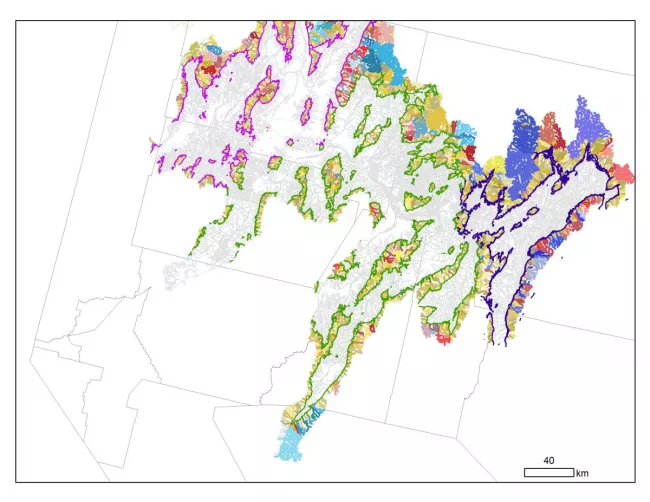Where to trout occur and why? This is a broad question of particular relevance to the arid west. Trout are absent of valley-bottom deserts but they occur regularly in the high elevation areas where cool temperatures and melting snow-pack maintain annual flows and adequately cool water temperatures. This question has important practical applications in considering the conservation of isolate trout populations but it also provides a useful framework in which to think about species distribution limiting in general.
The range of a species can be most fundamentally described in terms of geography (latitude and longitude) and elevation. These factors reflect the underlying influences of climatic conditions on species distributions, defining what is often termed a bioclimatic envelope. In the context of ecological niche theory bioclimatic envelopes may be viewed as analogous to the fundamental niche. The fundamental niche is a characteristic of the species itself, and in the context of temperature it is conditioned on the thermal requirements of a species. The realized niche of a species is defined as the actual range of conditions where a species is present, as determined physical or biotic factors that prevent a species from completely occupying its fundamental niche. Therefore, suitable climatic conditions are necessary, but insufficient to fully explain where a species is present. Understanding both the fundamental and realized constraints that define a species’ range in relation to climatic influences is critical for understanding how species may respond to climate change.
This project has to components. The first piece simply asks where trout occur on the landscape scale and how distribution limits change across broad gradients of elevation and latitude. The second component of the project looks within the elevation range where one could find trout and asks why they may occur in one basin but may be absent from another. I am creating a logistic regression model for the presence of native Lahontan cutthroat trout in watersheds in northern Nevada. I am interested in what features of a basin contribute to a higher probably of trout occurrence or persistence. In this effort I am are focusing on native Lahonton Cutthroat trout in Northern Nevada. These federally listed fish are threatened by habitat loss, water withdrawals and the invasion of non-native brook trout.
Collaborators
- Jason Dunham
- David Hockmann-Wert
- Chad Melison
In addition to studying brook trout in their native habitats in the eastern US, I am particularly interested in brook trout invasion across the western US. My research on brook trout invasion includes the issues of native trout displacement discussed above as well as broader food web and ecosystem effects (see associated research description).
